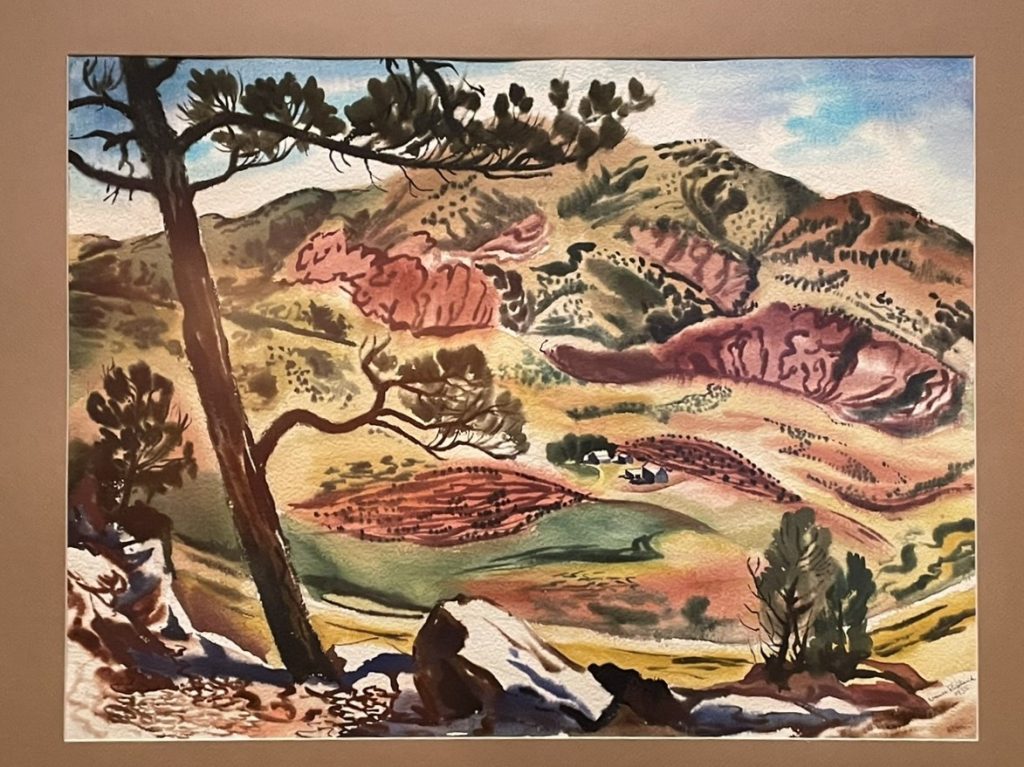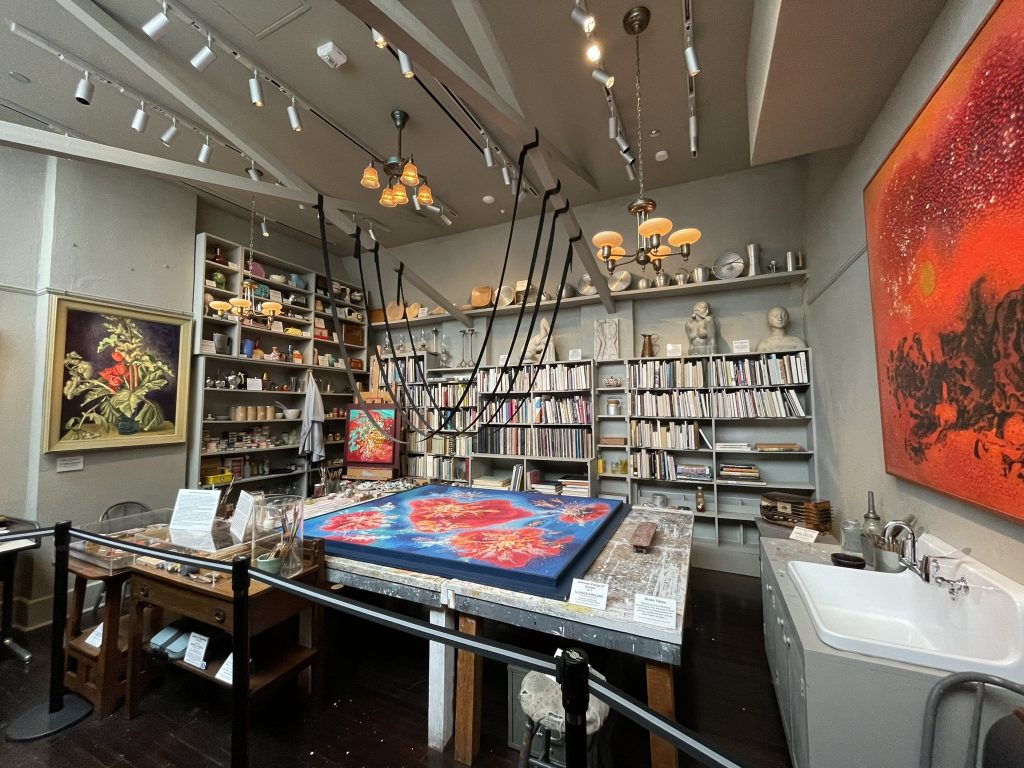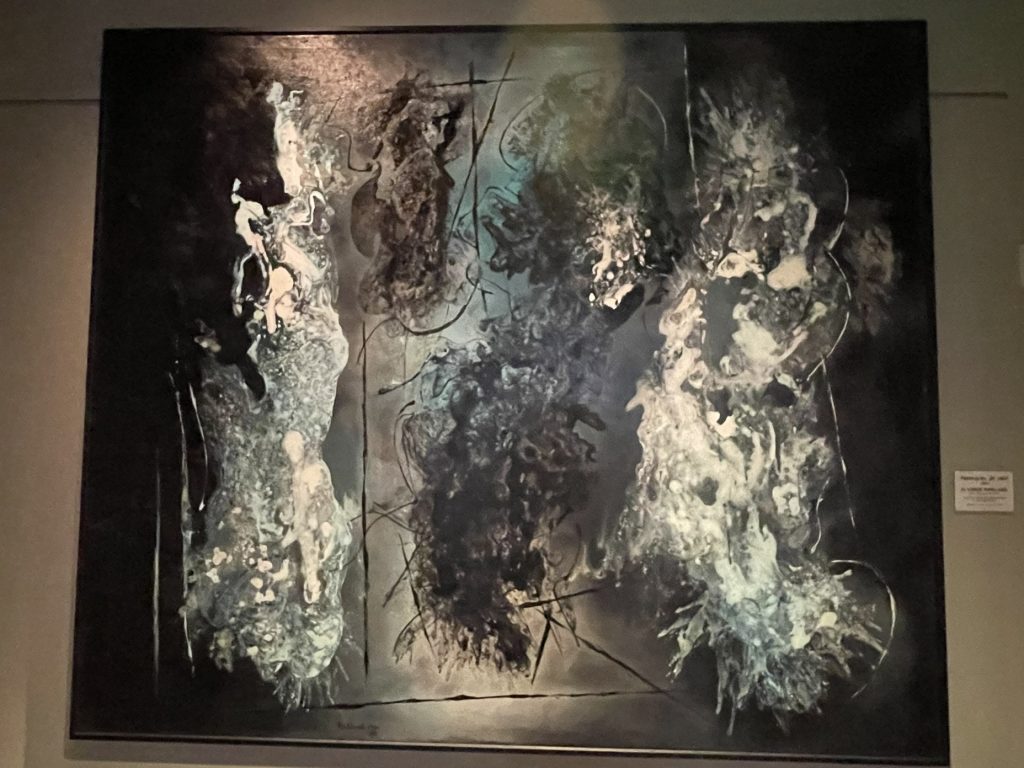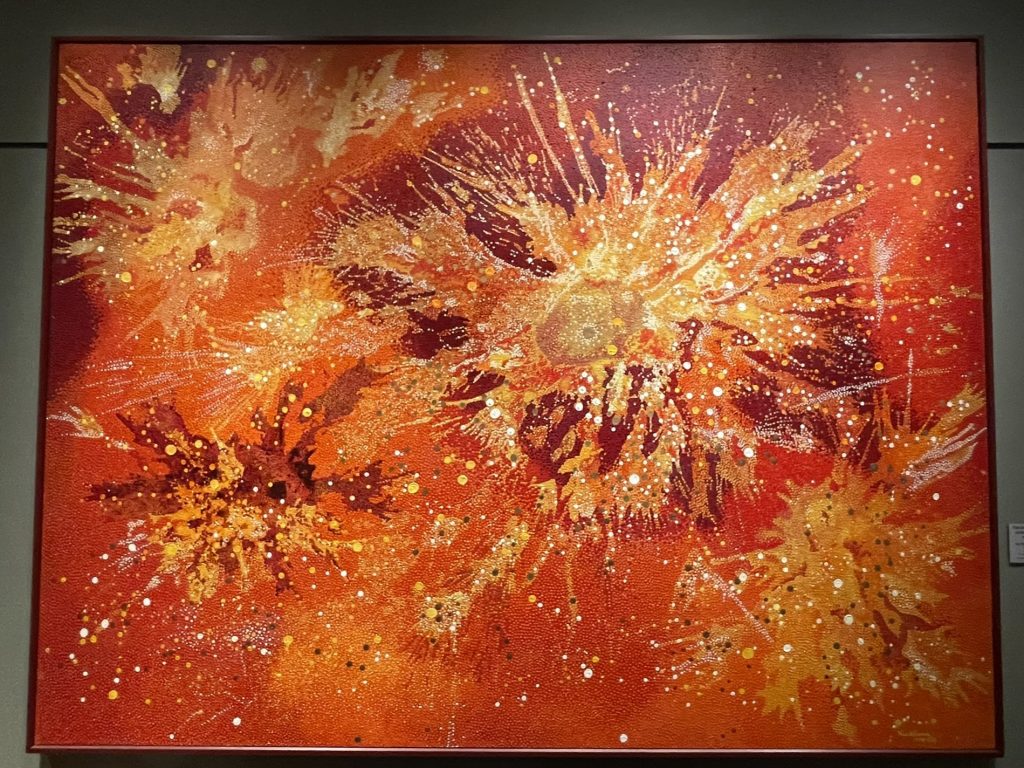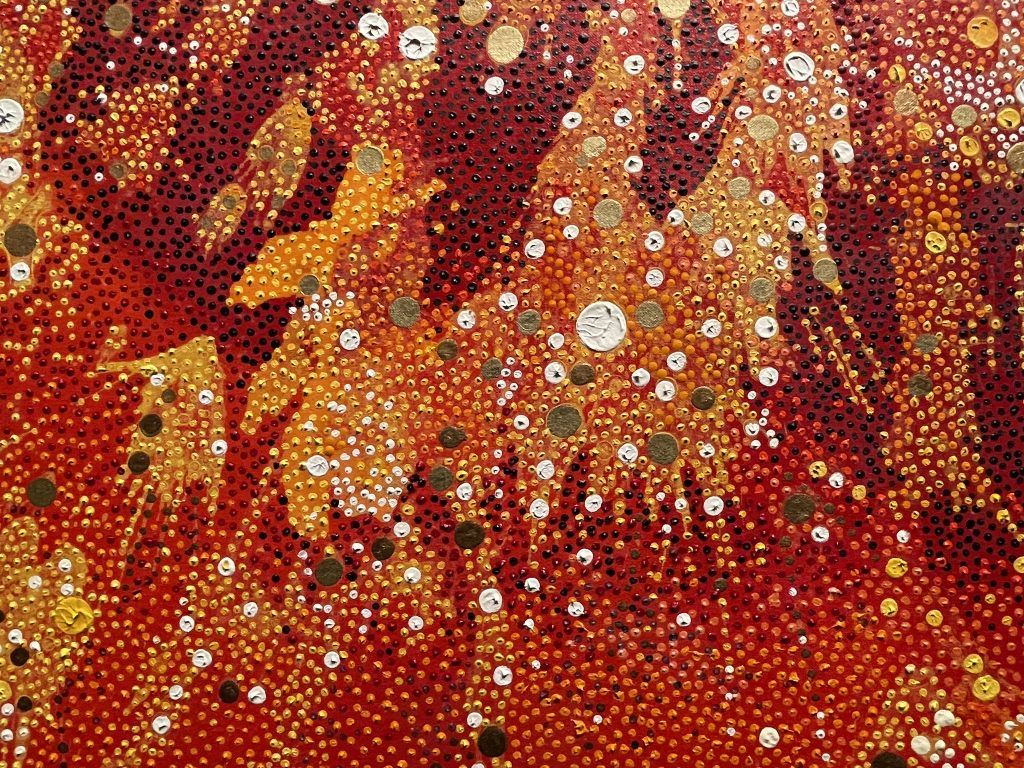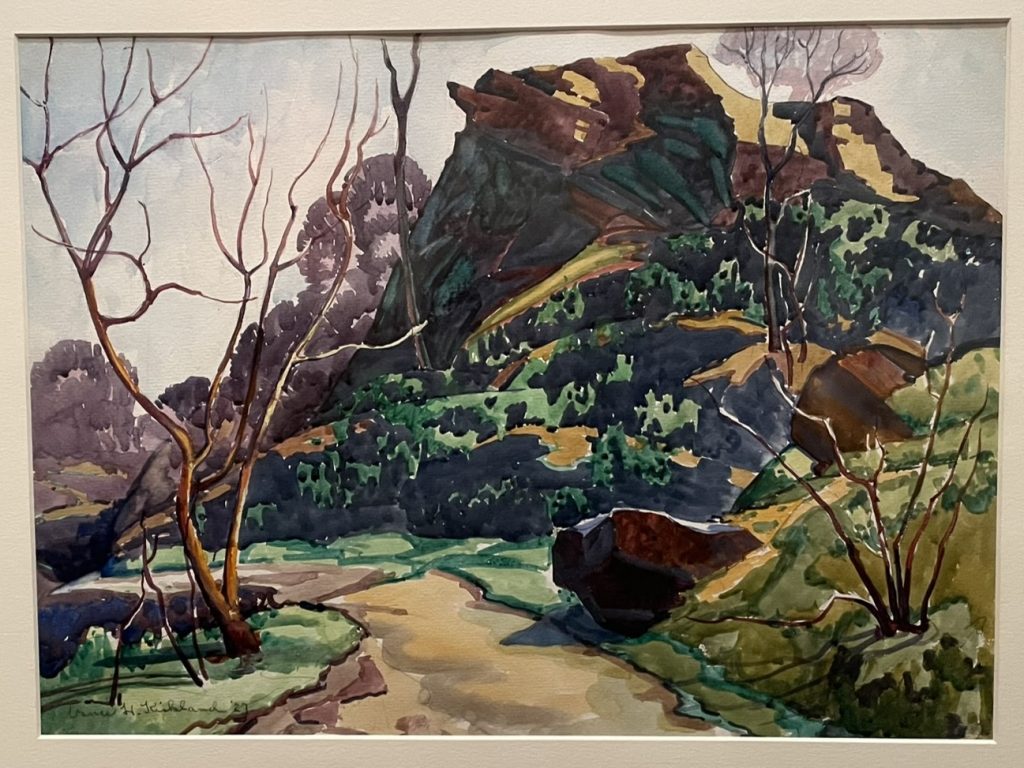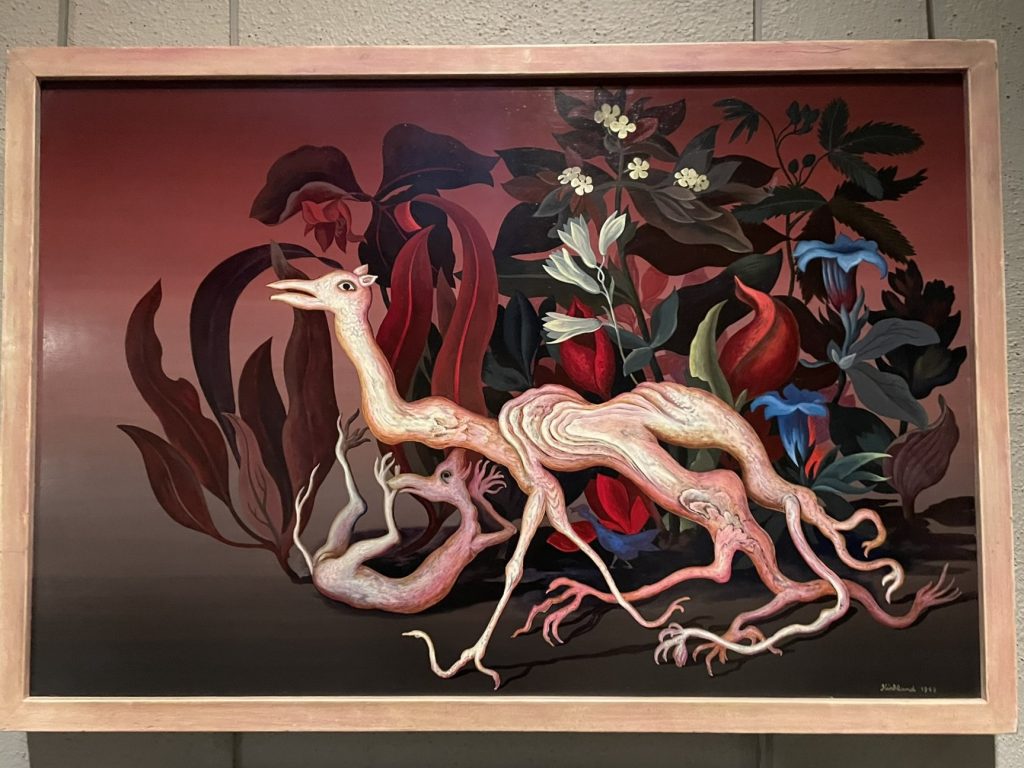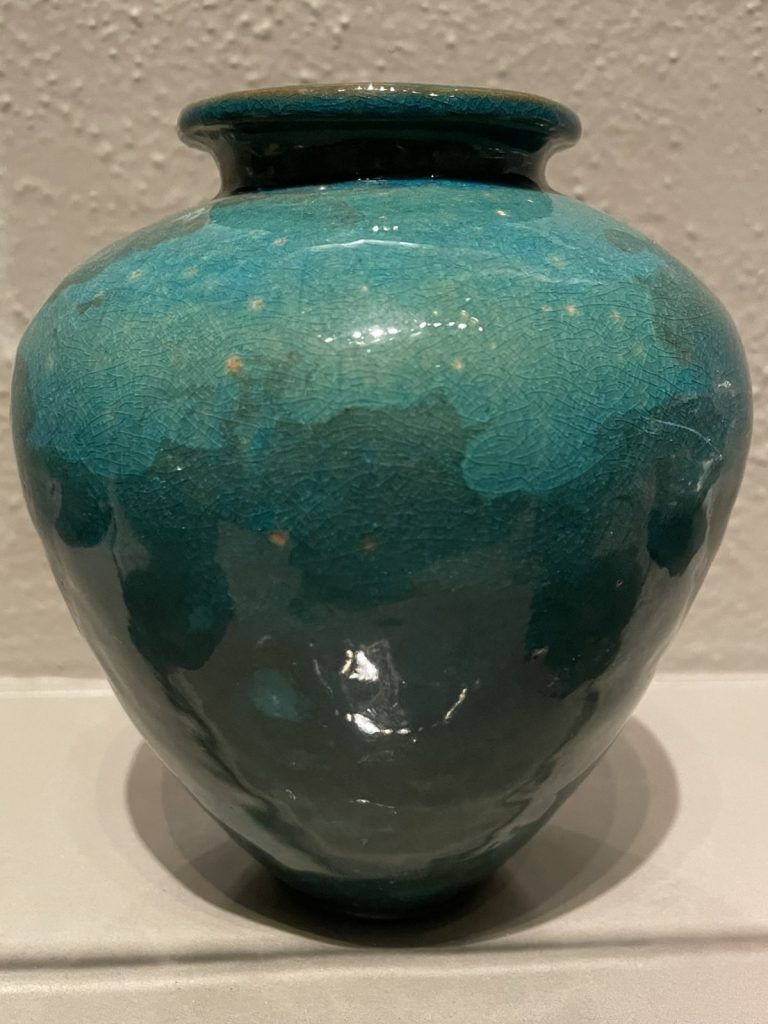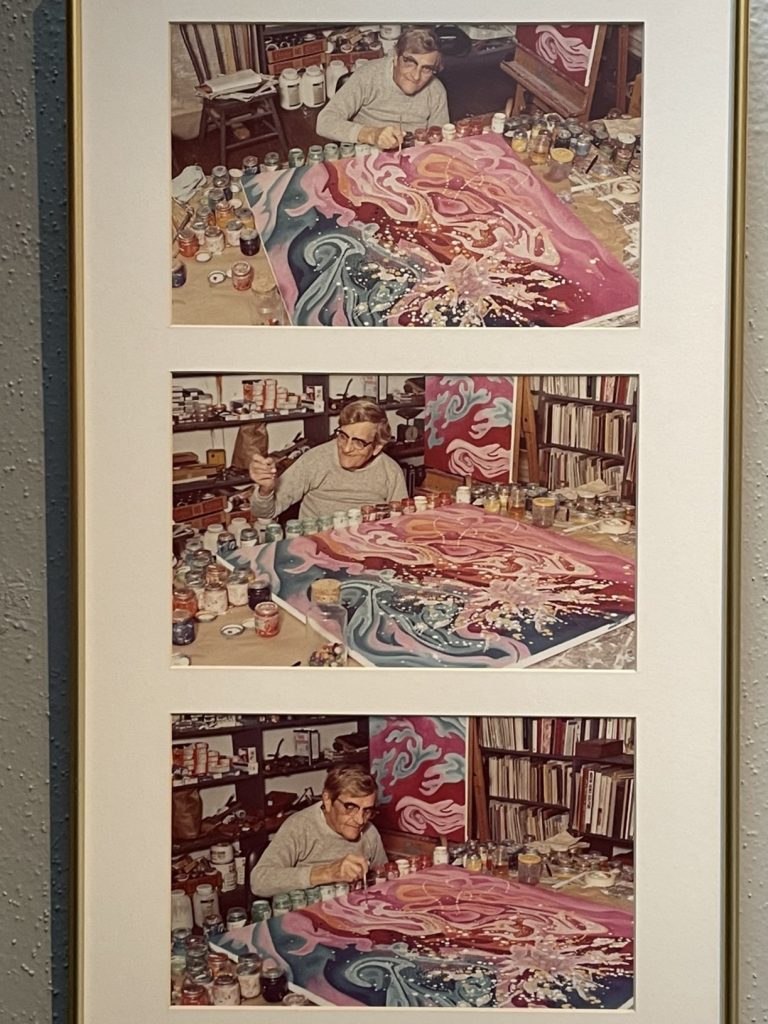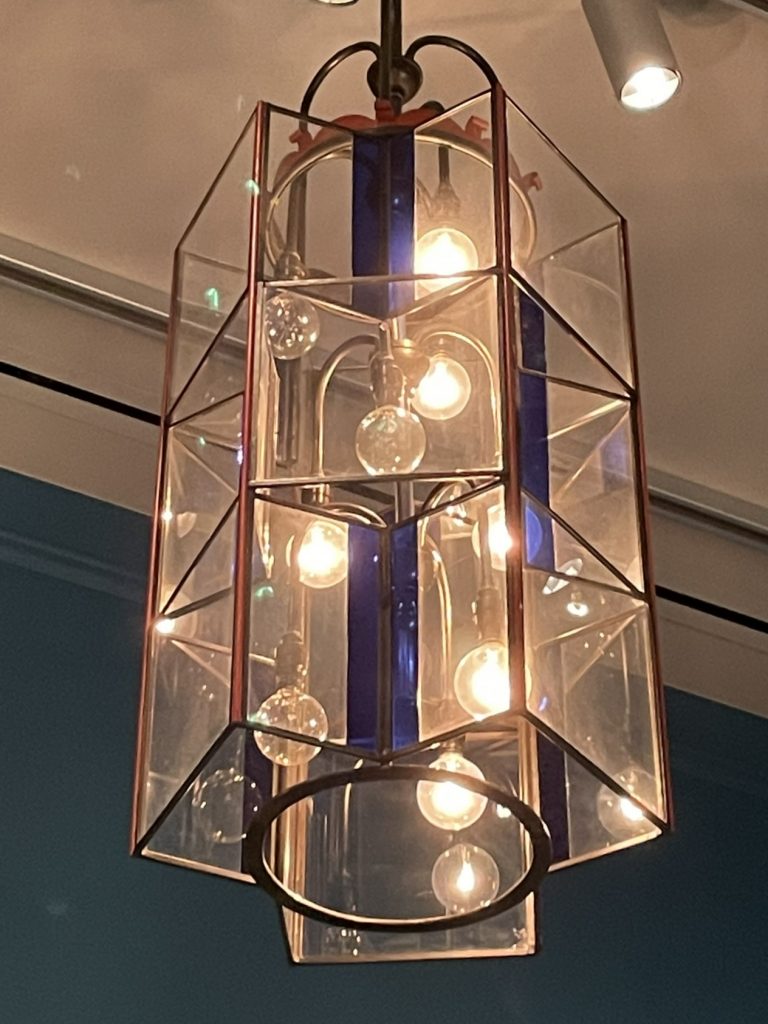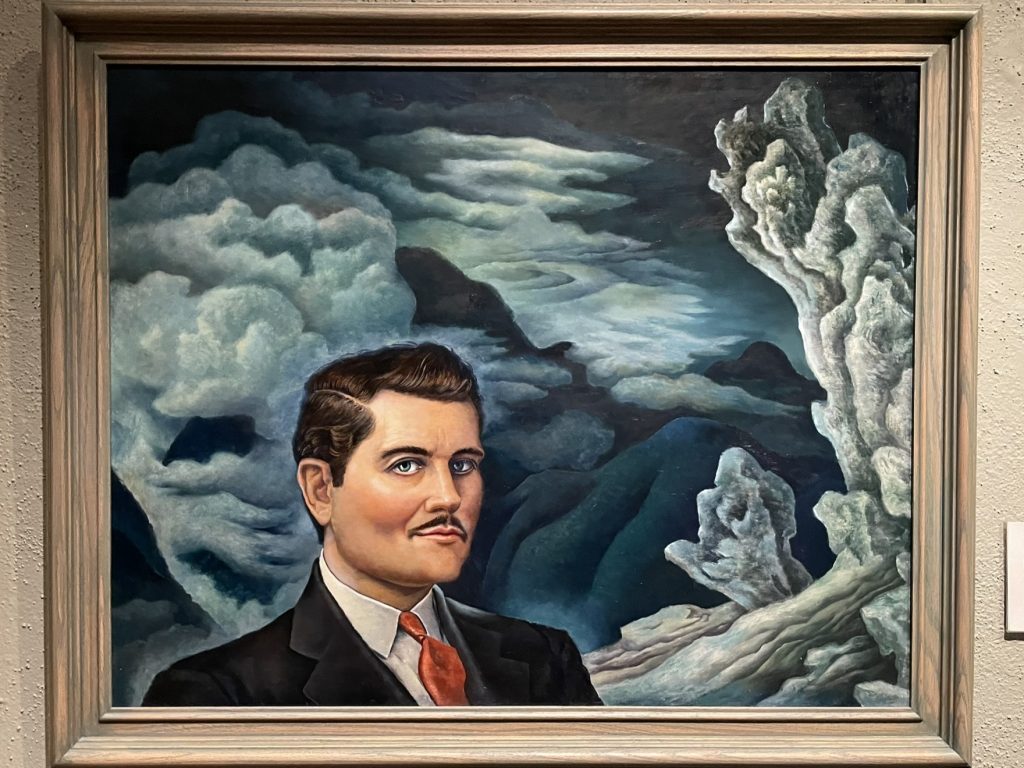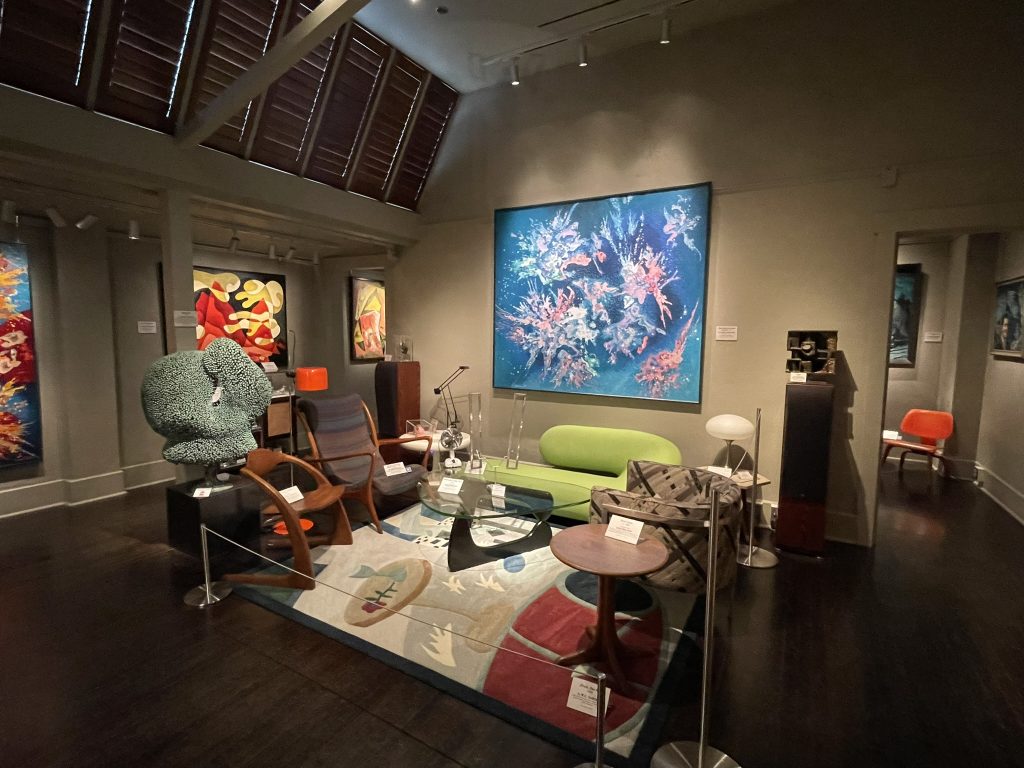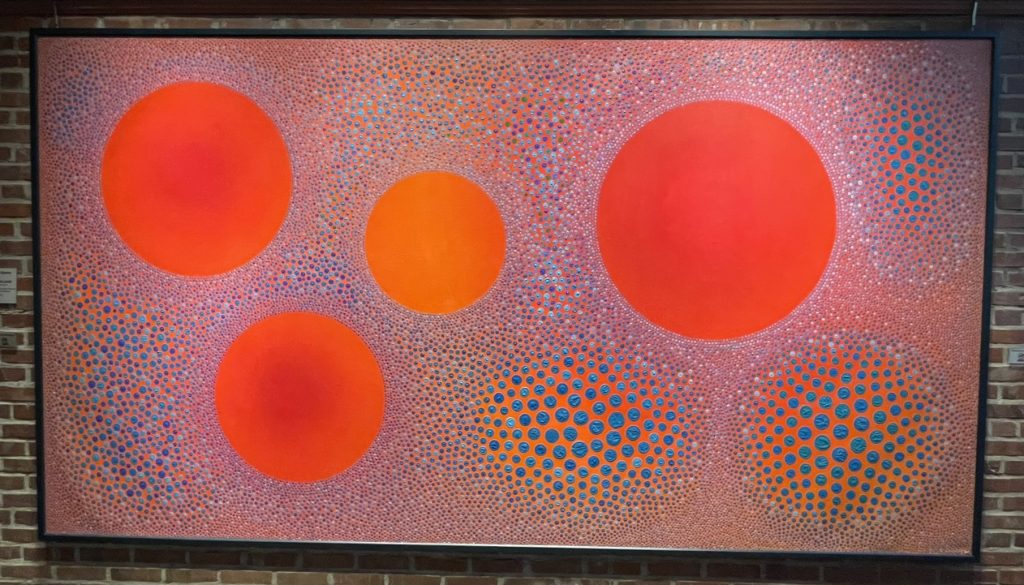We stopped in at the Kirkland Museum of Fine & Decorative Art in Denver, Colorado because it contained the artist’s original studio and we are attempting to visit as many artist studios as we can. Of course, we knew absolutely nothing about this Kirkland dude was or his work. But it was a great museum, we both really enjoyed all the decorative arts in the collection in particular.
Vance Kirkland (1904–1981) painted more than 1,200 paintings over his 55-year career, in a wide variety of styles –– “from realist and impressionist watercolors, to surrealist deadwood worlds, to abstract expressionist mixtures of oil paint and water to richly textured dot paintings in oil.”
He moved to Denver as a young man, and spent the rest of his life there, teaching and painting.
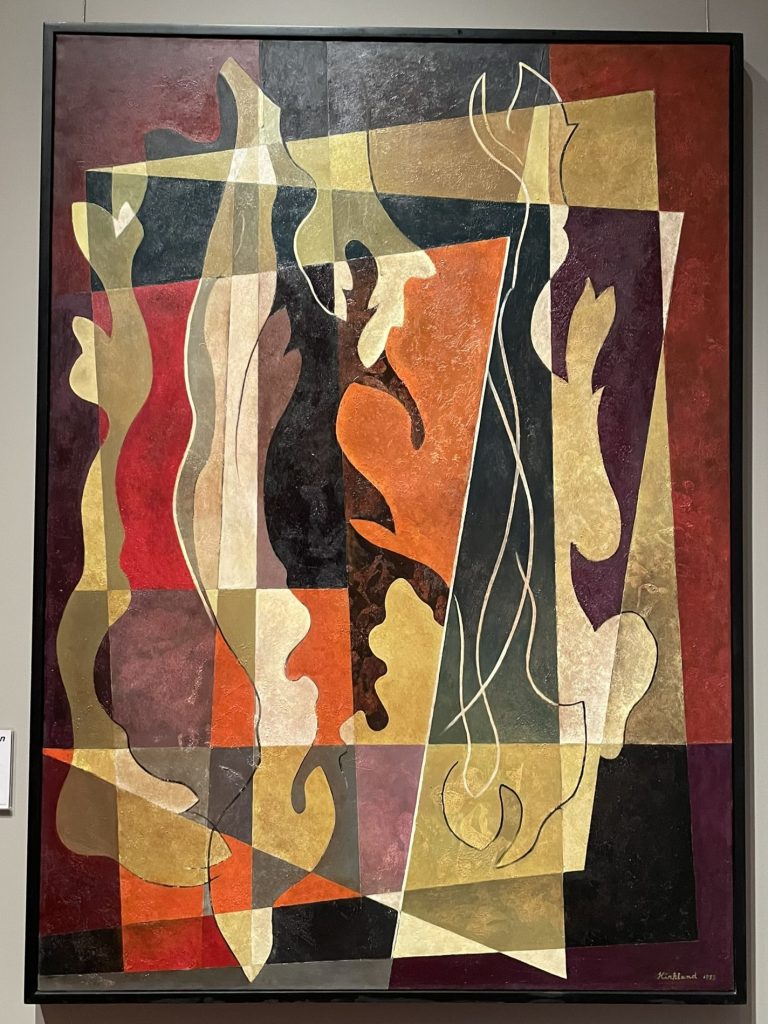
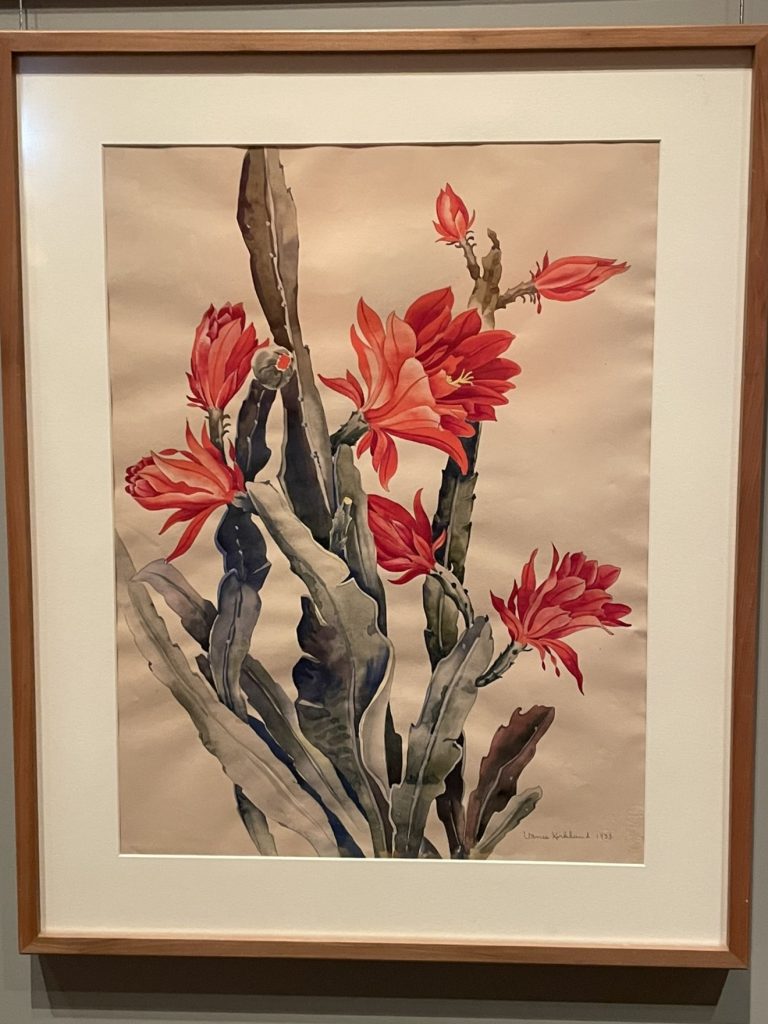
Kirkland ran the Kirkland School of Art for many years from the three-room brick Arts & Crafts building in the cover photo. It was originally located about eight blocks away, with classes accredited by the University of Colorado. Later he used it as his studio until his death. The front of the building looks small, but it extends back a good way.
Though we’d never heard of him, he had a very successful career, with more than 300 exhibitions from 1927 to 2000. His works are in the permanent collections of museums such as the Smithsonian American Art Museum (Washington, DC); the Art Institute of Chicago; the Nelson-Atkins Museum of Art (Kansas City, Missouri); Detroit Institute of Arts; and many others.
To be honest, I didn’t much care for Kirkland’s art, though it was still interesting to see his work and the studio he created in. Of course, Doug was more appreciative of his abstract expressionism.
A fun fact is that Kirkland’s wife didn’t seem to much care for his art, either. A sign said “his wife did not come to his studio for the last 15 years of her life because she didn’t understand abstraction.” Ouch.
This is just a portion of the museum, however, and you can read about what else there was to see here.
